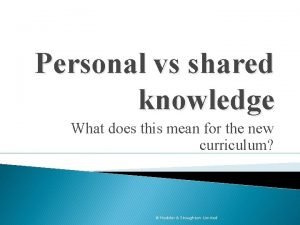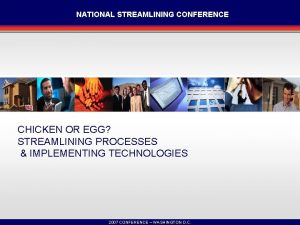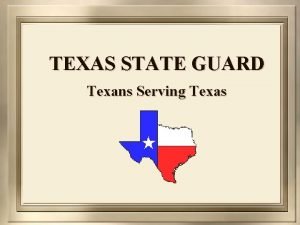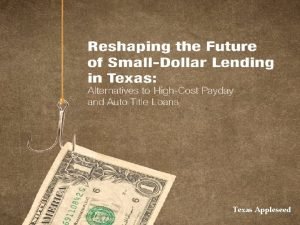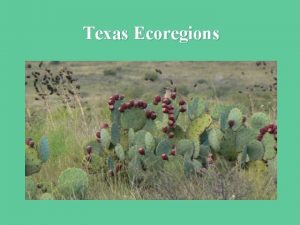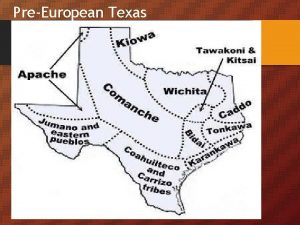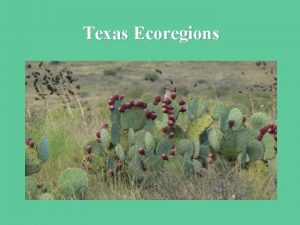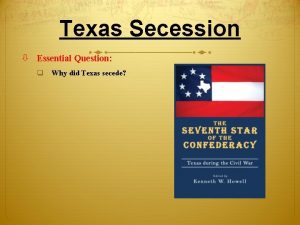Process for the Streamlining of Texas Essential Knowledge














- Slides: 14

Process for the Streamlining of Texas Essential Knowledge and Skills (TEKS) Cynthia Holcomb Education Specialist

Proposed Approval of Process for Streamlining Texas Essential Knowledge and Skills (TEKS) January 29, 2016 ITEM #8 COMMITTEE OF THE FULL BOARD: ACTION STATE BOARD OF EDUCATION: ACTION SUMMARY: This item provides the opportunity for the committee to review and approve a process to be used by the board in streamlining the Texas Essential Knowledge and Skills (TEKS) for science and social studies. Why? Feedback from educators about the lack of time to deeply teach process and content skills.

Prior history: In 2009, the SBOE directive was to reduce the number of TEKS and to clarify broad phrases and big ideas that don’t provide the guidance teachers need to prepare aligned instruction. Those TEKS were adopted to be effective August 4, 2009; amended to be effective August 24, 2010

First For Steps (abridged) Step 1: Texas Education Agency (TEA) staff notifies public of review process Step 2: State Board of Education (SBOE) members make SBOE TEKS streamlining committee nominations. (The application for committees should be posted this week. Each board member is responsible for nominating committee members from the applicant pool. ) Step 3: TEA notifies SBOE members of the placement of nominees "by the agreed upon deadline. " Step 4: TEA creates a survey for the SBOE’s review and input and then collects information via survey from educators.

Step 5: The charge to the TEKS streamlining committees based on survey feedback: - to begin by determining "an estimate of" the amount of time necessary for students to develop mastery of the content in the current standards;

- to only delete or reduce the scope of the student expectations; (Testimony included concerns about student expectations that were primarily math-based instead of science) - not to move content or student expectations from one grade level or course to another;

- not to add content or student expectations; - to look for student expectations that are duplicated in another course or grade level and eliminate unnecessary duplication; (Testimony included concerns about the importance of spiraling or scaffolding content; a key-word search is not effective in determining if content is redundant. )

- to use the current TEKS as the foundation document; - to consider the general course of study, not what might be covered in an Advanced Placement course; - to consider and maintain appropriate College and Career Readiness Standards (CCRS);

- to ensure recommendations are in compliance with all related statutes; - to provide justification for all suggested recommendations; - to track all revisions to show what has been deleted or simplified; (Testimony included the need to reword some of the TEKS for clarification purposes)

- to ensure that the remaining student expectations are content driven; (Testimony included concerns over this language; we want clarification that this does not mean the removal or reduction of process skills. )

- to carefully consider “an estimate of” the amount of time necessary for students to develop mastery of the content and ensure that all remaining student expectations reasonably can be taught within the amount of time typically allotted for the subject or course prior to the end of the school year or a state end-of-course assessment required by TEC, § 39. 023, as applicable. (Testimony included that schools often use science classes for things such as drug education, bullying prevention, sex education, TELPAS)

Any and all official documents must be left with TEA staff. Copies of working drafts may be kept for a committee member’s personal use between meetings, but may not be distributed to others "outside of the committee".

Steps 7 -19 involve: • creating TEKS streamlining committees • providing testimony • public hearings • comment periods • making amendments • first and second readings • final adoptions

Next steps: • Have teachers discuss and document their ideas about the time needed to teach the science TEKS. • Have teachers discuss and document the TEKS they think need to be deleted or reduced, and why. • Have teachers discuss and document which TEKS need clarification or simplification, and why. • Look for the application for committees should be posted this week.
 Plamatic acid
Plamatic acid Shared and personal knowledge
Shared and personal knowledge Knowledge shared is knowledge squared
Knowledge shared is knowledge squared Knowledge shared is knowledge multiplied meaning
Knowledge shared is knowledge multiplied meaning Knowledge creation and knowledge architecture
Knowledge creation and knowledge architecture Contoh shallow knowledge dan deep knowledge
Contoh shallow knowledge dan deep knowledge What is a priori and a posteriori knowledge
What is a priori and a posteriori knowledge Book smarts vs street smarts
Book smarts vs street smarts Knowledge claim
Knowledge claim Gertler econ
Gertler econ Kontinuitetshantering
Kontinuitetshantering Novell typiska drag
Novell typiska drag Nationell inriktning för artificiell intelligens
Nationell inriktning för artificiell intelligens Ekologiskt fotavtryck
Ekologiskt fotavtryck Varför kallas perioden 1918-1939 för mellankrigstiden
Varför kallas perioden 1918-1939 för mellankrigstiden








